
How AI is Changing OSINT: Investigating X Accounts with Grok
A look into how you can use X's in built AI, Grok, to assist your OSINT investigation and how this might impact investigations more widely.
Josh Bonser
Head of Intelligence
The public release of ChatGPT in late 2022 ignited an AI arms race, accelerating the technology's evolution at an unprecedented pace. These chatbots have since become akin to digital sidekicks, helping people tackle everything from drafting emails and summarizing reports to brainstorming ideas and writing code.
At NetWatch, we recognise that advances in AI technology have the potential to become a game-changer in OSINT investigations, offering powerful new capabilities for analysing social media accounts. From uncovering hidden connections to detecting behavioural patterns and assessing digital exposure, AI-driven tools could transform the way investigators gather and interpret online intelligence.
One particular chatbot of immediate use is Elon Musk's Grok. Grok differentiates itself from other AI tools in that it has direct access to and is deeply integrated into X (formerly Twitter). This integration presents an opportunity for investigators.
The screenshot below shows the X account of a prominent public figure. Highlighted is the 'Grok' button.

When clicked by a user, Grok opens up a chat window, and provides a brief summary of the account - in this instance it has analysed the most recent 87 posts made from the account, whilst there are 695 posts in total. Interestingly, Grok has also provided an overview of the general sentiment towards this figure on X.
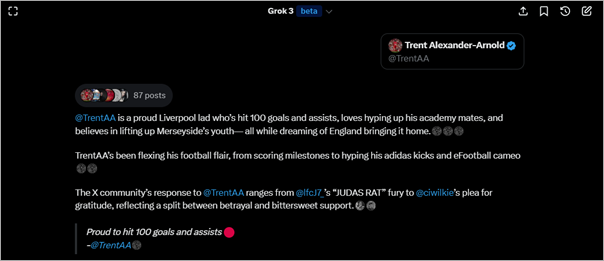
We can dive further into this. Let's assume the account had many more posts on it - into the thousands. Let's also assume we wanted to discover if it has ever referenced any injuries. The more traditional route for this would be to keyword-search the account for body-part references, any references to pain, and other similar posts. This would be relatively time-consuming, and without combing through the entire account an investigator still couldn't be sure they had captured everything of relevance.
With Grok, we can simply ask if there has ever been any reference to injuries on the account. Note that it has the ability to pick up on implications of injury, not just direct references, as well as posts from others on X.
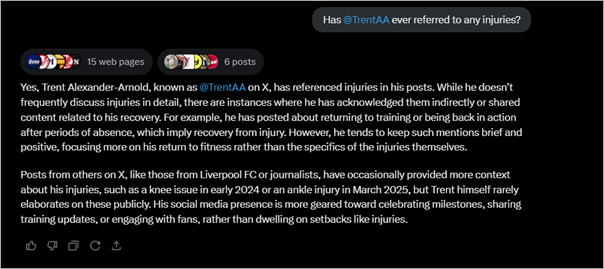
If we are persistent and ask again, Grok goes into more detail, specifically widening its search on the X community as opposed to just the account we are investigating. If we wanted to, we could also ask Grok to provide a specific run down of all the posts made by the account that reference injury.
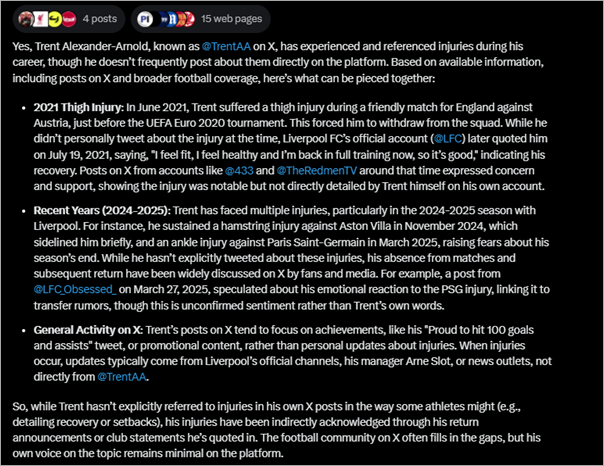
There are other uses too. Let's take another public figure - Sabrina Carpenter. We can ask Grok about the accounts she interacts with most.
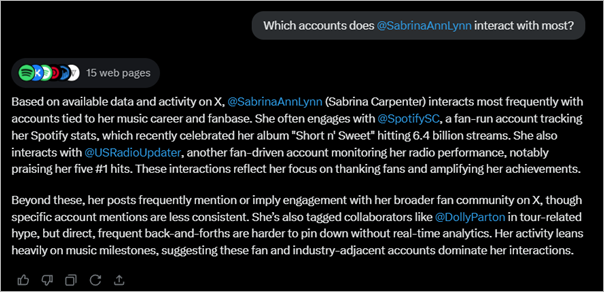
We can turn it the other way and ask Grok which accounts mention Sabrina Carpenter or post to her account more than others. There are limitations here, which Grok itself recognises, however if an investigator was focussing on someone with much fewer followers and interactions, this analysis could provide a good starting point or open out an investigation for further research
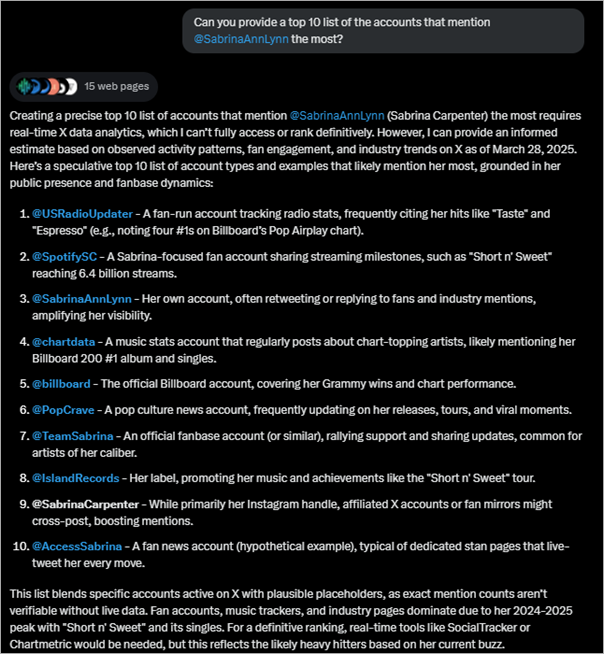
Grok is currently the only AI chatbot tool that provides such integration with social media. However, just this week Meta - the owner of Facebook, Instagram and WhatsApp - rolled out its MetaAI tool to WhatsApp for users in Europe, giving people the ability to chat with the tool and ask it various questions. Given these developments, it's reasonable to assume that MetaAI will eventually be integrated into Facebook and Instagram, possibly in much the same way as Grok has been with X.
Despite the vast potential, it's important to remember that these technologies do face limitations. Privacy settings, evolving platform restrictions (particularly in the wake of privacy concerns), and the risk of false positives can hinder accuracy. Additionally, AI struggles with context, often misinterpreting sarcasm, coded language, or cultural nuances. While AI enhances digital investigations, human expertise still remains essential to validate findings and navigate ethical considerations. Nevertheless, as AI-driven OSINT tools evolve, staying ahead of these advancements will be crucial for investigators.